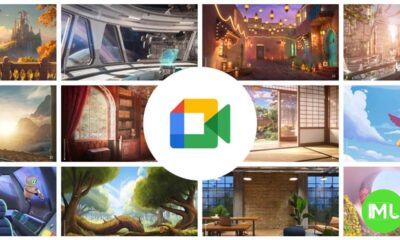Google rolls out live scam detection for Pixel 6-9 devices and testing new features in search

Google Introduces Live Scam Detection on Pixel Phones
After showcasing it at Google I/O 2024, Google is now rolling out real-time Scam Detection for phone calls on Pixel devices, starting from Pixel 6 up to the latest Pixel 9 series. This feature aims to protect users from fraudulent calls by analyzing conversation patterns that are typically associated with scams.
How Scam Detection Works
Scam Detection listens for specific conversation cues, such as urgent requests for money or suspicious account activities, that are often found in scam calls. If such patterns are detected, the phone will alert the user with an audio and haptic notification. Users will see a “Likely scam” warning on their screen, along with an option to “End call” or mark it as “Not a scam.”
For example, if a caller pretends to be from your bank and urgently asks you to transfer funds, Scam Detection analyzes the conversation and alerts you if it finds the call suspicious. On the Pixel 9 series, this feature is powered by Gemini Nano, Google’s advanced AI model. For Pixel 6, 7, and 8a devices, other robust on-device machine learning models handle the detection.
Privacy and User Control
Google has emphasized user privacy in implementing this feature. No audio or transcripts of the call are stored on the device or sent to Google servers. The Scam Detection feature is off by default, and users need to enable it manually via the Google Phone app settings. Users can also turn it off during specific calls if needed.
To enable this feature, users can navigate to Google Phone App Settings > Scam Detection. It is currently available for English-speaking users in the U.S. who are part of the Google Phone app’s public beta program.
For feedback on this feature, users can go to Phone by Google App > Menu > Help & Feedback > Send Feedback.
Google Play Protect’s Live Threat Detection
In addition to Scam Detection, Google is enhancing its security measures with Google Play Protect’s Live Threat Detection. This feature provides real-time alerts if it detects harmful apps on your device. Initially, it focuses on identifying stalkerware — software that secretly collects personal data without user consent. Over time, Google plans to expand this protection to include other types of malicious apps.
This new threat detection system analyzes actual behavior patterns of apps, even those that try to hide their malicious activities or lie dormant before activating suspicious behaviors. It is currently available for Pixel 6 and newer devices, powered by Google’s Private Compute Core, and will soon expand to other phone manufacturers.
Google Tests New Link Color in Search
In another update, Google is experimenting with a new color scheme for links in Google Search. For years, Google’s search links have been blue, but now some users are noticing the links appearing in an orange-brown color. This change has been observed in both the Google Search app and Chrome browser, indicating it is a test rather than a full release.
Possible Reasons for the Change
Google has been making several visual updates across its platforms, especially with the integration of Material You design, which brings dynamic theming to Android apps. However, this new orange link color seems unrelated to Material You, as it appears on both Android and iOS devices, particularly in dark mode.
Some users speculate that the new color is an attempt to create a more eye-friendly experience, especially for those using dark mode, as the orange hue is softer on the eyes compared to the traditional blue.
If you prefer the classic blue links, you may be able to revert to them by switching to light mode or signing out of your Google account. However, since this is an experimental feature, there is no guaranteed way to change it back until Google decides whether to roll out the new color scheme fully.
Conclusion
Google continues to enhance the user experience on its devices with these new features. The real-time Scam Detection offers a proactive approach to call security, protecting users from potential scams using on-device AI, without compromising privacy. Meanwhile, the new link color test in Google Search shows Google’s ongoing efforts to improve the visual design and user comfort.
As Google expands these features and tests new updates, users can look forward to an improved, safer, and visually appealing experience on their Pixel devices and across Google’s services.
Google Meet gets a fresh new look with Material 3 design

Google Meet is getting a big update to its look, thanks to the new Material 3 design. This change brings a cleaner and more modern style to the video calling app, making it easier and more enjoyable to use.
With Material 3, Google Meet now has rounder buttons, softer colors, and better spacing between elements. The main controls, like the microphone, camera, and end call buttons, are now larger and easier to tap. The icons and text are also clearer, which helps users find what they need quickly during a call.
Another improvement is the new “expressive” color system. This feature lets the app’s colors match your device’s wallpaper or theme, giving each user a unique and personalized experience. The changes also make Google Meet more accessible, as the new design is easier to read and use for everyone, including people with vision difficulties.
These updates are rolling out to both web and mobile versions of Google Meet. Google says the new look will help people feel more comfortable and focused during their meetings. Overall, the Material 3 update makes Google Meet not only look better but also work better for all its users.
Android
Easy ways to change Android Auto’s look with light and dark themes

Android Auto is a helpful tool that lets you use your phone’s apps safely while driving. It connects your phone to your car’s screen, making it easier to use maps, music, and calls. One of the features many people like is the ability to change how Android Auto looks by switching between light and dark themes.
How to switch between light and dark themes
Android Auto offers two main themes: light and dark. The light theme uses brighter colors, which can make the screen easier to see during the day. The dark theme uses darker colors, which can be more comfortable for your eyes at night or in low light.
To change the theme, follow these steps:
- Open the Android Auto app on your phone.
- Go to the settings menu.
- Find the “Theme” option.
- Choose between “Light,” “Dark,” or “Set by car” (this lets your car decide the theme based on the time of day or your car’s settings).
Why themes matter
Using the right theme can make driving safer and more comfortable. The light theme is good for bright days, while the dark theme helps reduce glare at night. Having these options means you can pick what works best for you, making Android Auto easier to use in any condition.
In short, Android Auto’s theme options are simple to use and help you drive more safely by making the screen easy to see, no matter the time of day.
Google Drive and Files by Google get fresh updates for easier use

Google is rolling out some helpful updates to two of its popular apps: Google Drive and Files by Google. These changes are designed to make managing your files and watching videos much smoother.
First, Google Drive is getting a new video player. Now, when you upload a video to Drive and open it, you’ll notice a fresh look that matches Google’s latest design style. The controls, like play and pause, are easier to use and look cleaner. This update makes it simpler to watch videos directly in Drive without needing to download them first.
Meanwhile, the Files by Google app is also getting a makeover. The app is adopting Google’s Material 3 design, which means it looks brighter and more modern. The buttons and menus are easier to see and use, making it simpler to find, move, and organize your files. There are also new color options and improved icons, so everything feels more user-friendly.
Both updates show Google’s commitment to making its apps more helpful and enjoyable to use. Whether you’re watching videos in Drive or sorting files on your phone, these changes aim to save you time and make things less complicated. If you use these apps, keep an eye out for these new features—they should arrive soon!
-

 Apps1 year ago
Apps1 year agoGboard Proofread feature will support selected text
-

 News1 year ago
News1 year agoSamsung USA crafting One UI 6.1.1
-

 Apps12 months ago
Apps12 months agoGoogle Contacts app testing new Besties Widget
-

 AI12 months ago
AI12 months agoGoogle Pixel 9 Pro may come with a complimentary one-year Gemini Advanced subscription
-

 News1 year ago
News1 year agoBreaking: Samsung Galaxy S22 may get Galaxy AI features
-

 Apps12 months ago
Apps12 months agoGoogle working on a new video editing feature for its Photo app
-

 Apps12 months ago
Apps12 months agoGoogle Maps lets you report traffic jams and accidents on Apple CarPlay, but not on Android Auto
-

 Apps12 months ago
Apps12 months agoGoogle Messages app will transform MMS chats into RCS










